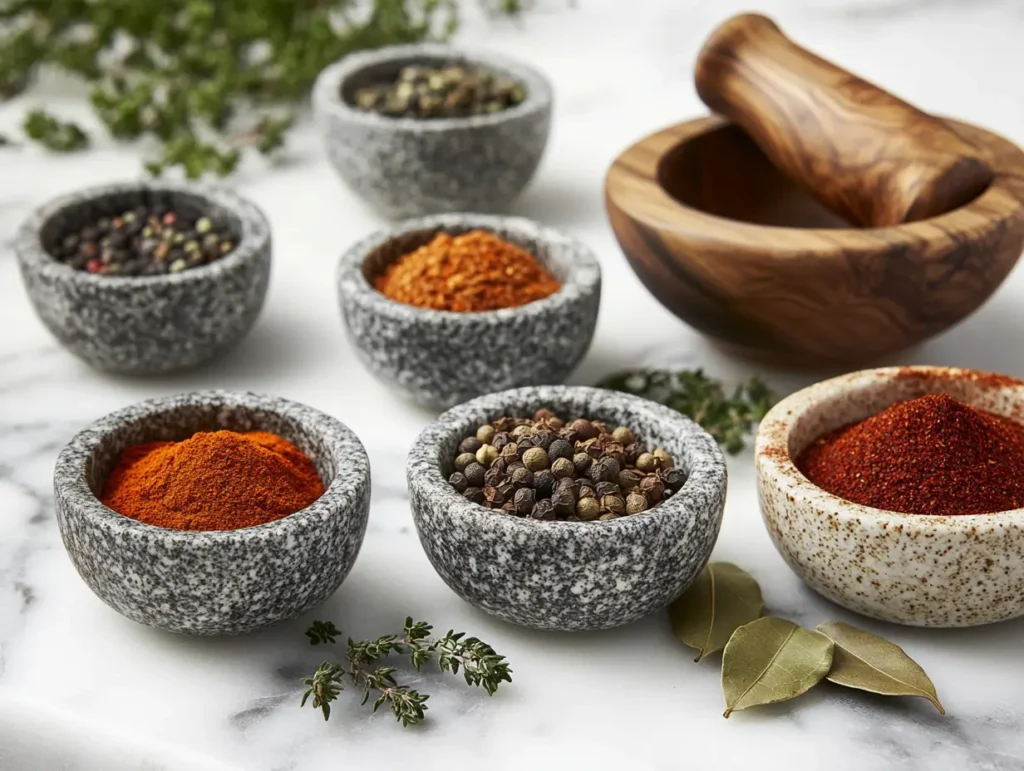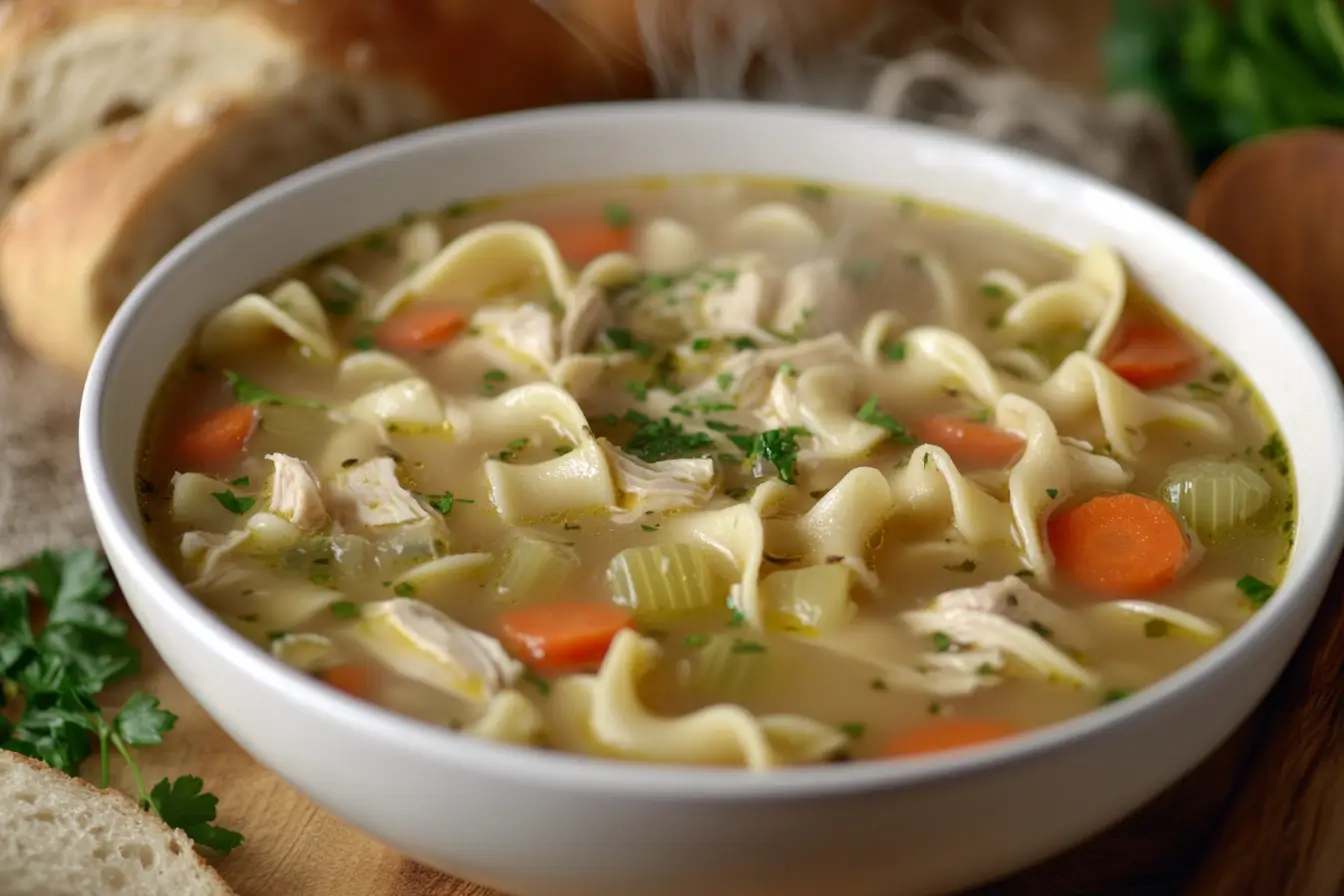Soup has a way of bringing people together, offering warmth, nourishment, and a touch of comfort that few dishes can rival. But when we think about crafting the perfect bowl of soup, one question often arises: What is the most important ingredient in soup? While some might argue it’s the broth, others may claim it’s the vegetables, aromatics, or seasoning. The truth is, every ingredient has its place, and understanding how to balance these elements is the key to elevating your soup-making game. Let’s explore 13 practical ways to improve your soup and uncover the secret to making every bowl unforgettable.
Understanding the Foundation: What Is the Most Important Ingredient in Soup?
The base of your soup determines its flavor, texture, and depth. Whether you’re preparing a creamy bisque or a clear broth, the foundation sets the tone for the entire dish. This is why choosing the right stock or broth is crucial. What is the most important ingredient in soup? Many would argue it’s the liquid base, and they’re not wrong.
Check out what is the secret ingredient in soup to uncover some exciting ideas.
Stock vs. Broth: What’s the Difference?
Stock is made by simmering bones with vegetables and herbs, creating a rich, gelatinous liquid that adds body to soups. Broth, on the other hand, is prepared by simmering meat with aromatics, resulting in a lighter, more versatile base. Both have their strengths, but homemade options always trump store-bought ones. If you’re short on time, opt for high-quality pre-made versions that list natural ingredients.
To build a flavorful base, roast bones and vegetables before simmering. This simple step can enhance the depth of flavor. Additionally, season your stock or broth lightly at first, adjusting as needed once all the ingredients come together. What is the most important ingredient in soup? Without a doubt, a well-prepared liquid foundation is essential for achieving delicious results.
If your soup ever feels flat, learn how to jazz up bland soup with a few simple techniques.
The Role of Fresh Vegetables in Soup-Making

Fresh vegetables bring vibrancy, nutrition, and texture to your soup, making them an indispensable component. What is the most important ingredient in soup? For vegetable-based soups, the answer often lies in the quality of your produce.
Choosing seasonal, local vegetables ensures maximum flavor and freshness. For example, root vegetables like carrots, parsnips, and sweet potatoes are ideal for hearty soups, while leafy greens such as spinach and kale work beautifully in light broths.
Slicing vegetables into uniform sizes ensures they cook evenly, preventing some from becoming mushy while others remain underdone. By adding vegetables in stages—starting with firm ones and ending with delicate greens—you can achieve a balance of textures. Remember, fresh produce doesn’t just make your soup taste better; it also enhances its nutritional value, adding a wholesome touch to every spoonful.
Explore the benefits of black beans and belly fat reduction to see why they are a fantastic addition to soups.
Why Aromatics Are Key Soup Components
If you’ve ever wondered why some soups taste bland, the likely culprit is a lack of aromatics. Onions, garlic, celery, and carrots form the backbone of many soup recipes, providing a depth of flavor that’s hard to replicate.
Sweating aromatics in oil or butter before adding liquid helps release their natural sweetness and infuses the soup base with complexity. For example, sautéing onions until they turn translucent brings out their subtle sweetness, while cooking garlic until fragrant adds warmth and richness. When combined with celery and carrots, these ingredients create a balanced foundation that complements virtually any soup style.
Transitioning from this base to adding liquid and other ingredients ensures every layer of your soup is flavorful. While aromatics may not always be the answer to what is the most important ingredient in soup, their role in building a rich, savory base is undeniable.
Learn more about how to make soup thick and creamy to perfect your technique.
Using Herbs and Spices for Flavor in Your Soup
Herbs and spices are the soul of a good soup. They not only enhance the natural flavors of your ingredients but also add complexity, making every spoonful exciting. What is the most important ingredient in soup? Many argue it’s the seasoning, and it’s easy to see why.
Fresh herbs like parsley, thyme, and cilantro brighten up soups and should be added toward the end of cooking. Dried herbs such as oregano, basil, and bay leaves release their flavors over time and are best added earlier in the process. The same goes for spices like cumin, turmeric, or smoked paprika, which can lend warmth and depth.
A great tip is to toast whole spices in a dry pan before grinding or adding them to your soup. This technique unlocks their full flavor potential, elevating your dish to restaurant-quality levels. Proper seasoning requires tasting as you go and layering flavors gradually. This ensures you don’t overpower the soup with any single herb or spice, allowing every element to shine.

Choosing the Right Protein for Homemade Soup Recipes
Proteins are what transform a soup from a simple starter to a hearty main course. Whether you’re adding chicken, beef, seafood, or plant-based proteins, choosing the right one is essential for creating balance.
For meat-based soups, opt for cuts with some fat or bones for extra richness. Chicken thighs, for instance, are more flavorful than breasts, while beef shanks or short ribs add depth to brothy soups. For plant-based soups, beans, lentils, and tofu are excellent options that provide both substance and nutrition.
Timing is everything when adding protein to your soup. Delicate proteins like seafood should be added toward the end to prevent overcooking, while tougher cuts benefit from slow simmering to tenderize them. Season proteins lightly before adding them to the soup to ensure they don’t overpower the other flavors.
Dive into the science behind why chefs put vinegar in soup to understand how this simple addition can transform your dish.
Mastering Soup Thickness and Texture: Essential Soup-Making Tips
The consistency of your soup can dramatically affect how it’s enjoyed. Some prefer thick, creamy soups, while others lean toward lighter, broth-based options. Achieving the right texture depends on your thickening technique.
Common thickening agents include roux (a mixture of flour and fat), cornstarch, and arrowroot. These are perfect for soups like chowders or bisques. Alternatively, you can puree starchy vegetables like potatoes, squash, or carrots to achieve a naturally thick consistency without additional ingredients.
For those looking to avoid dairy, blending cashews with water creates a velvety texture similar to cream. Coconut milk is another great option that adds richness without overpowering other flavors. Texture is just as important as flavor in answering what is the most important ingredient in soup, as it contributes to the overall experience.
Dive into the science behind why chefs put vinegar in soup to understand how this simple addition can transform your dish.
Layering Flavors: How to Build Depth in Soup
Soup-making is a process of layering flavors, starting with aromatics and building up to the final seasoning. Each layer adds a new dimension to the dish, creating a rich and satisfying profile.
Begin by sautéing aromatics until fragrant, then add proteins or vegetables and sear them to develop their natural flavors. Deglazing the pot with a splash of wine or broth helps lift any caramelized bits, which intensify the overall flavor. By seasoning gradually—adding salt, herbs, or spices in stages—you can control the flavor balance and avoid over-seasoning.
Layering is key to making soups that taste complex and well-rounded, providing a satisfying answer to what is the most important ingredient in soup.
Balancing Salt and Acidity for Better Soup Flavor
Salt and acidity are your best friends when it comes to enhancing the natural flavors of your soup. Salt brings out the sweetness in vegetables and the savoriness in proteins, while acidity brightens and balances the dish.
Add salt incrementally and taste as you go, as it’s easier to add more than to fix an overly salty soup. For acidity, consider a splash of vinegar, a squeeze of lemon juice, or even a dollop of yogurt. These elements cut through richness and prevent the soup from feeling heavy, making it more enjoyable.
Acidity can also be used to highlight specific ingredients. For example, adding lemon juice to a lentil soup enhances its earthy undertones. Understanding how to balance these flavors ensures that your soup is anything but one-dimensional.
Discover what makes a Southern cornbread to find the perfect partner for your next soup.
Adding Noodles, Grains, or Legumes to Enhance Soup
Noodles, grains, and legumes can transform your soup into a meal, adding heartiness and texture. When adding these ingredients, timing is crucial.
Cook pasta separately if you plan to freeze your soup, as it can become mushy when reheated. Grains like quinoa, farro, or barley can be cooked directly in the soup but may require extra liquid. Legumes, including lentils and beans, benefit from slow simmering, which allows them to absorb the soup’s flavors.
These additions not only provide substance but also complement the soup’s base, ensuring every bite is as satisfying as the last.
Simmering Techniques for Perfect Soup-Making
Simmering allows the flavors in your soup to meld together while keeping ingredients tender and intact. Low and slow cooking preserves the integrity of delicate ingredients like leafy greens and seafood.
Timing is everything—vegetables with different cooking times should be added in stages, and proteins should be checked frequently to prevent overcooking. Simmering also allows aromatics and spices to infuse the soup fully, creating a harmonious flavor profile.
Learn how ham bones and vegetables create a hearty, nourishing classic or explore what fruits pair with carrots for unique flavor combinations.
Garnishes and Toppings to Complete Your Soup
Toppings can transform your soup into a feast for the senses. Popular options include fresh herbs, grated cheese, croutons, or a drizzle of olive oil. These additions add texture and flavor while making the dish visually appealing.

Storing and Freezing Homemade Soups the Right Way
Storing soup properly ensures its flavors improve over time. Let the soup cool completely before refrigerating or freezing. Use airtight containers, leaving some space for expansion. Avoid freezing soups with dairy or noodles, as these don’t reheat well.
Common Mistakes to Avoid When Making Soup
Overcooking, adding too much liquid, and skipping the taste test are common errors. By seasoning gradually and adjusting as you go, you can avoid these pitfalls and create a perfect bowl every time.
Conclusion
Soup-making is an art, and every ingredient plays a vital role. By mastering the techniques outlined above, you can create soups that are flavorful, balanced, and unforgettable. Whether you’re a beginner or an experienced home cook, these tips will help you make the most of every bowl.
FAQs
What is the Secret to Making Good Soup?
The secret to making good soup lies in building layers of flavor. Start with a high-quality broth or stock as the foundation, then carefully layer aromatics, vegetables, proteins, herbs, and seasonings. Slow simmering allows these flavors to meld together, creating depth and richness.
What Ingredient Makes Soup Taste Good?
A well-made broth or stock is the ingredient that makes soup taste truly good. It acts as the canvas upon which all other flavors are built. Other key ingredients include aromatics like onions, garlic, and celery, as well as fresh herbs and spices that enhance the soup’s flavor profile.
What is the Key for Good Soup?
The key to good soup is balance. Combining savory, sweet, salty, and acidic elements ensures that the flavors are well-rounded. Cooking techniques like sautéing aromatics, simmering slowly, and seasoning at every stage also contribute to a delicious final product.
What is the Secret Ingredient in Soup?
The secret ingredient in soup often depends on the type of soup being made, but common choices include a splash of vinegar or citrus for brightness, a Parmesan rind for umami, or a unique spice blend for complexity. These small additions can transform an ordinary soup into an extraordinary one.

